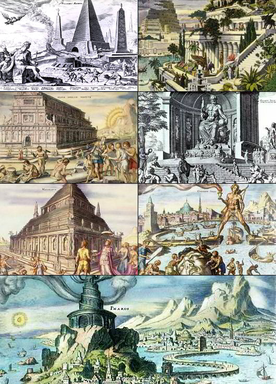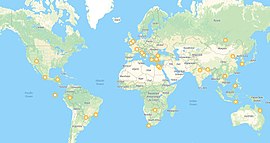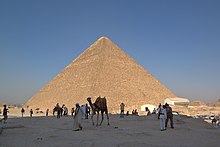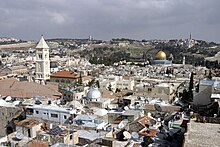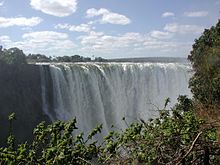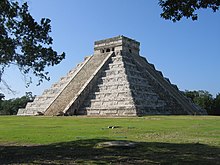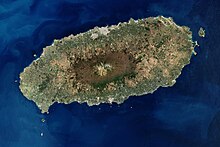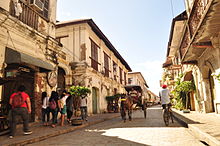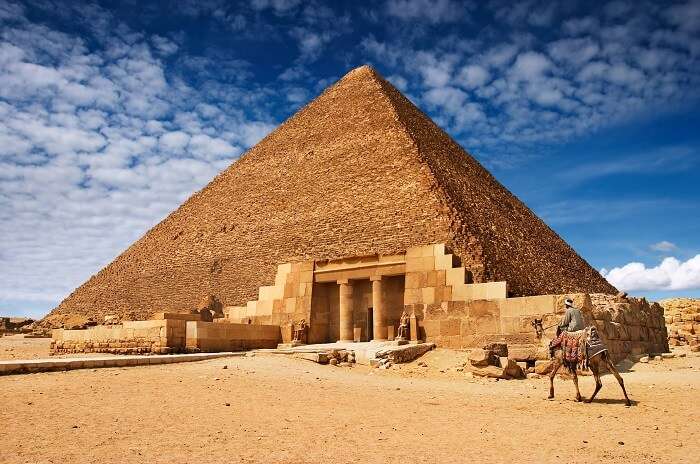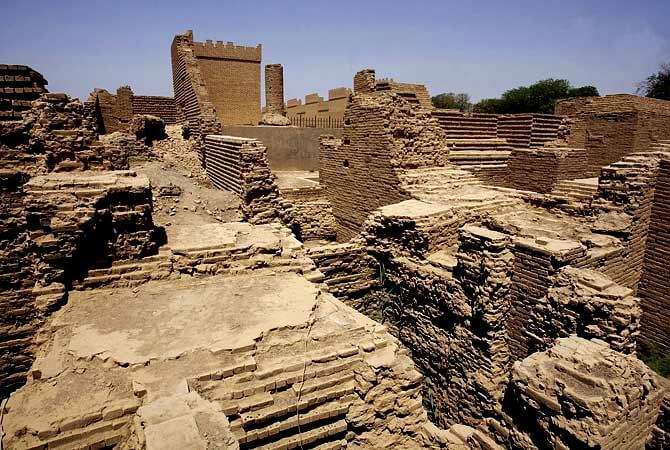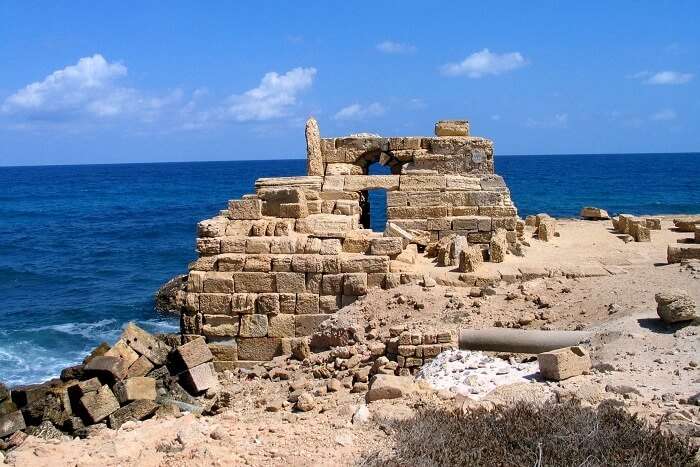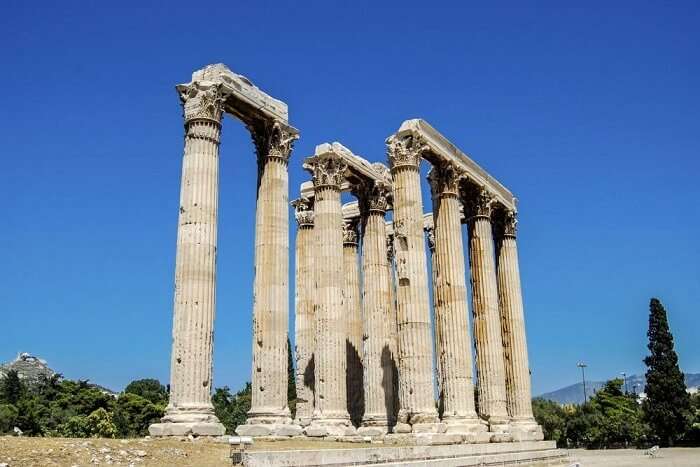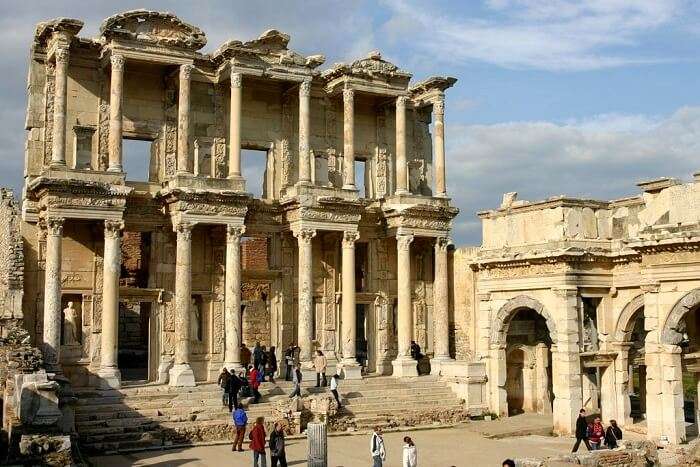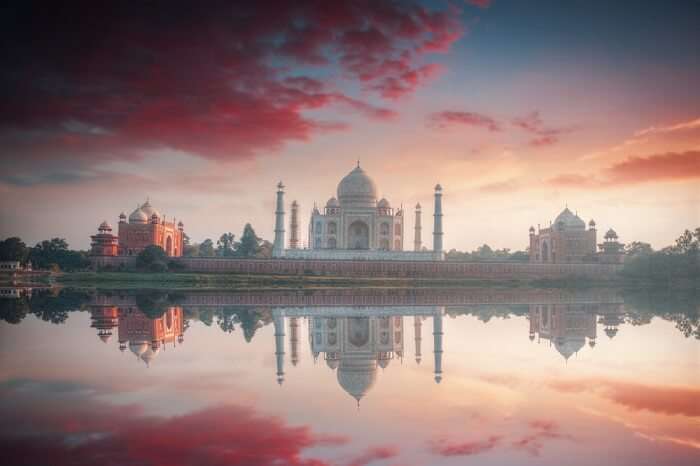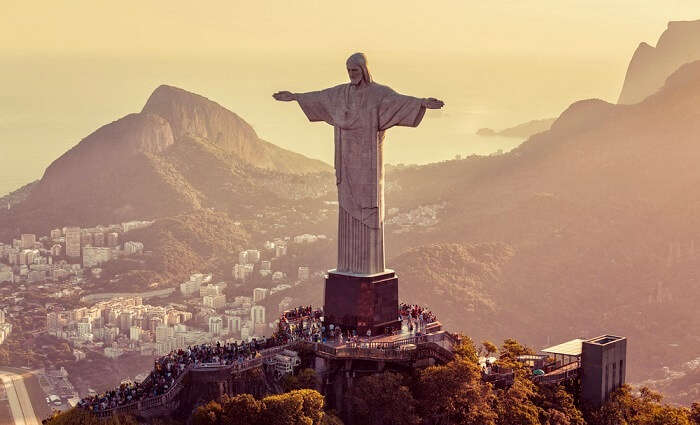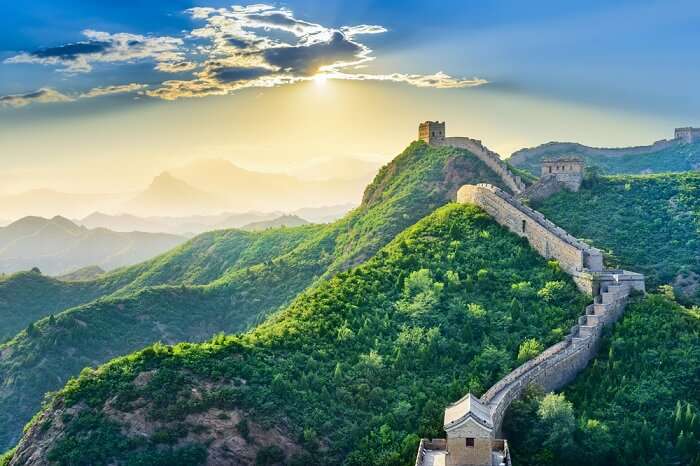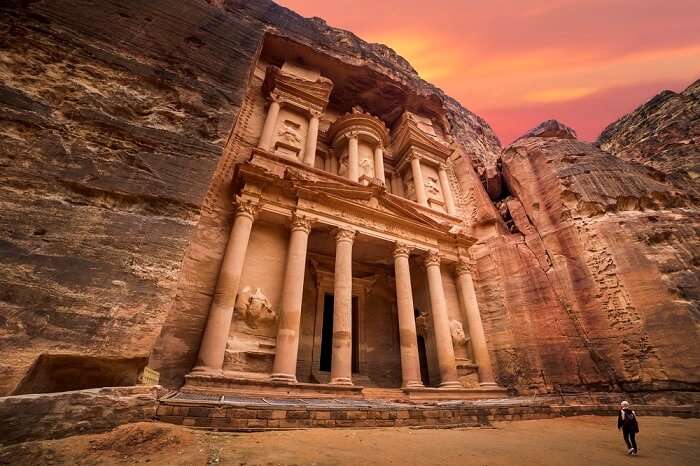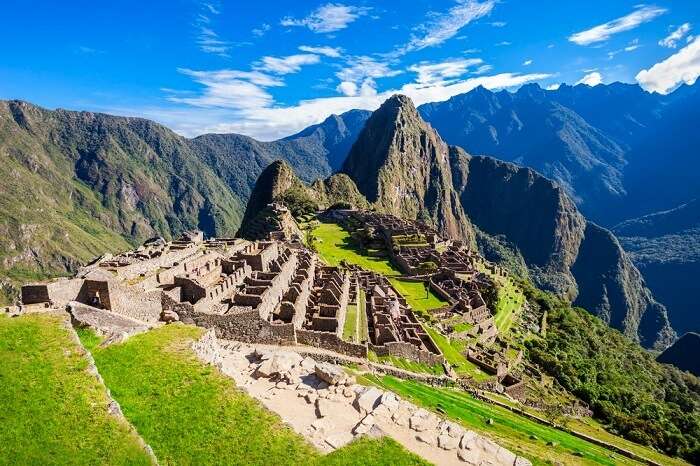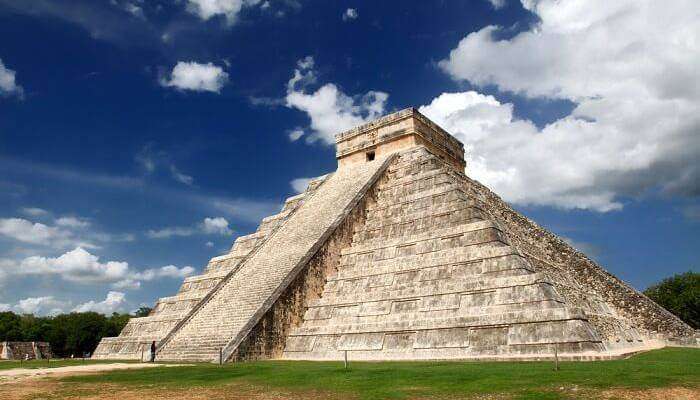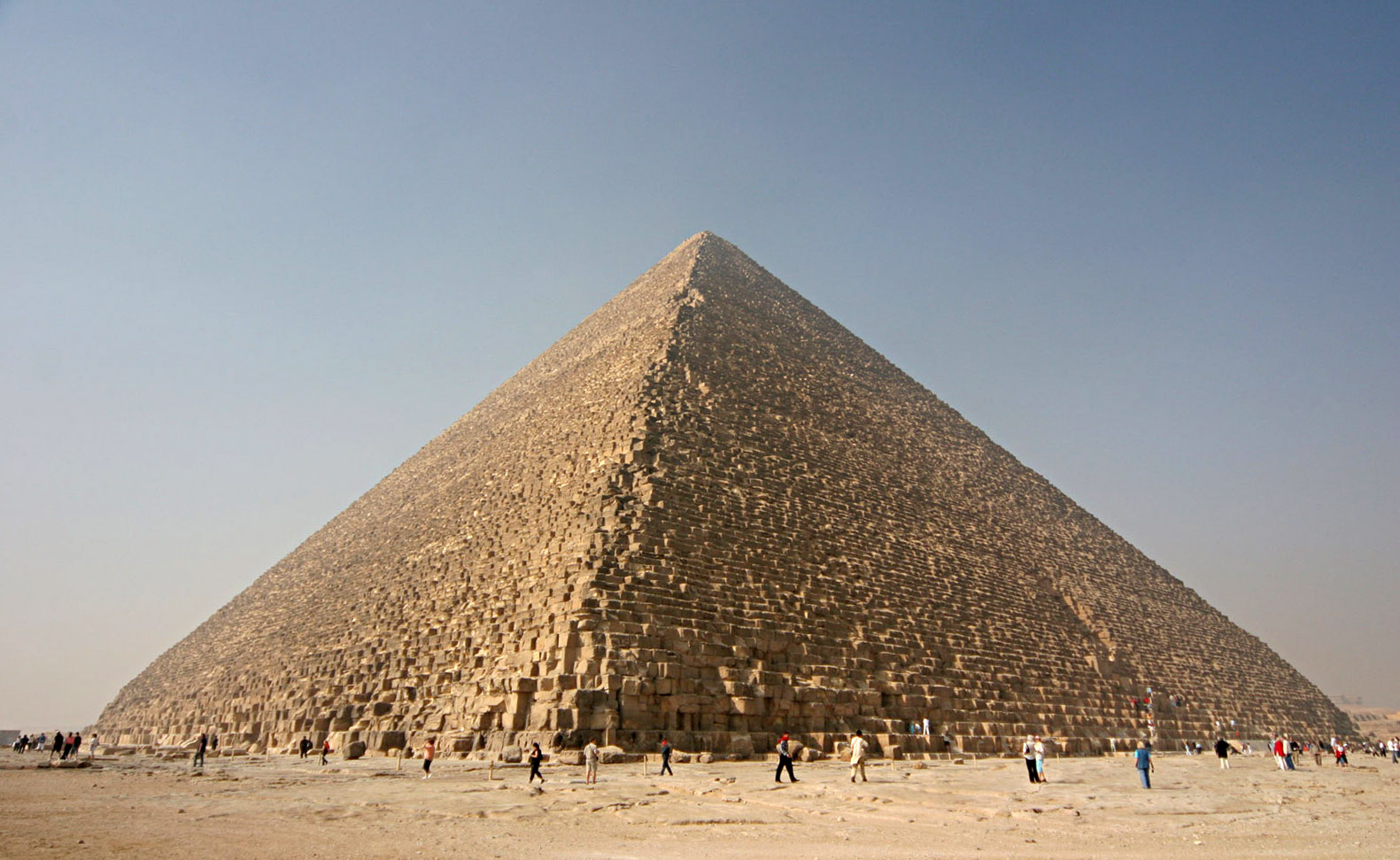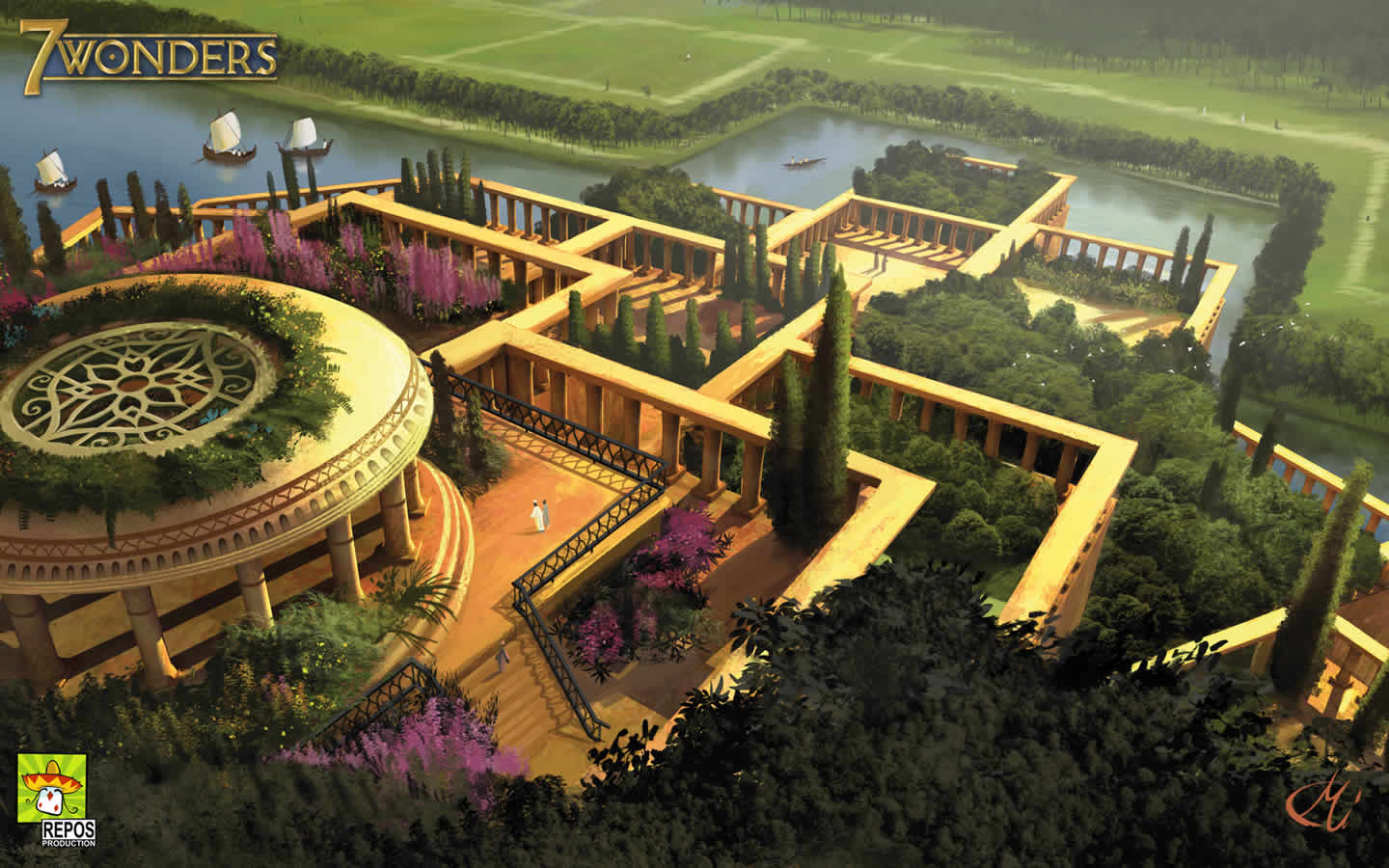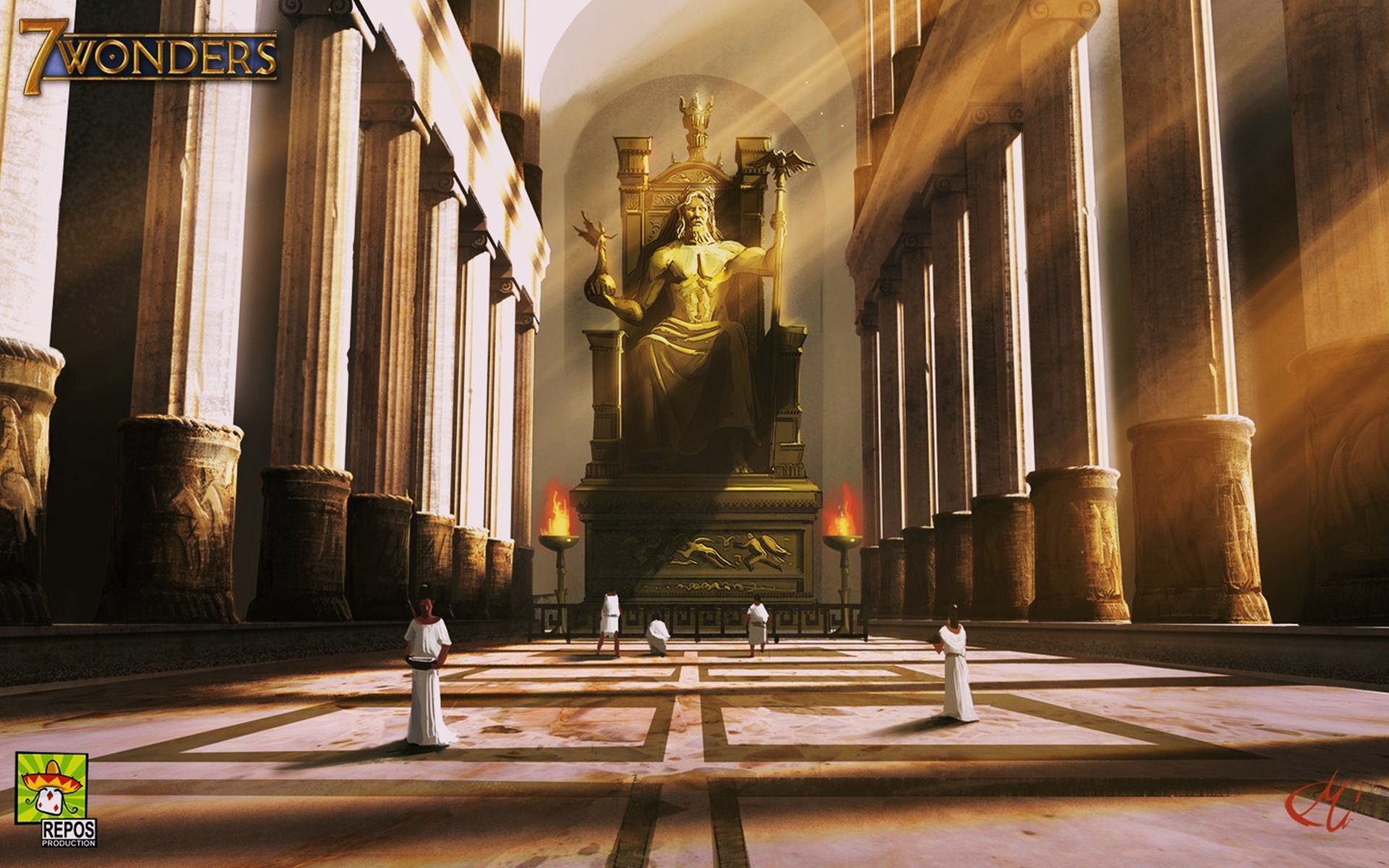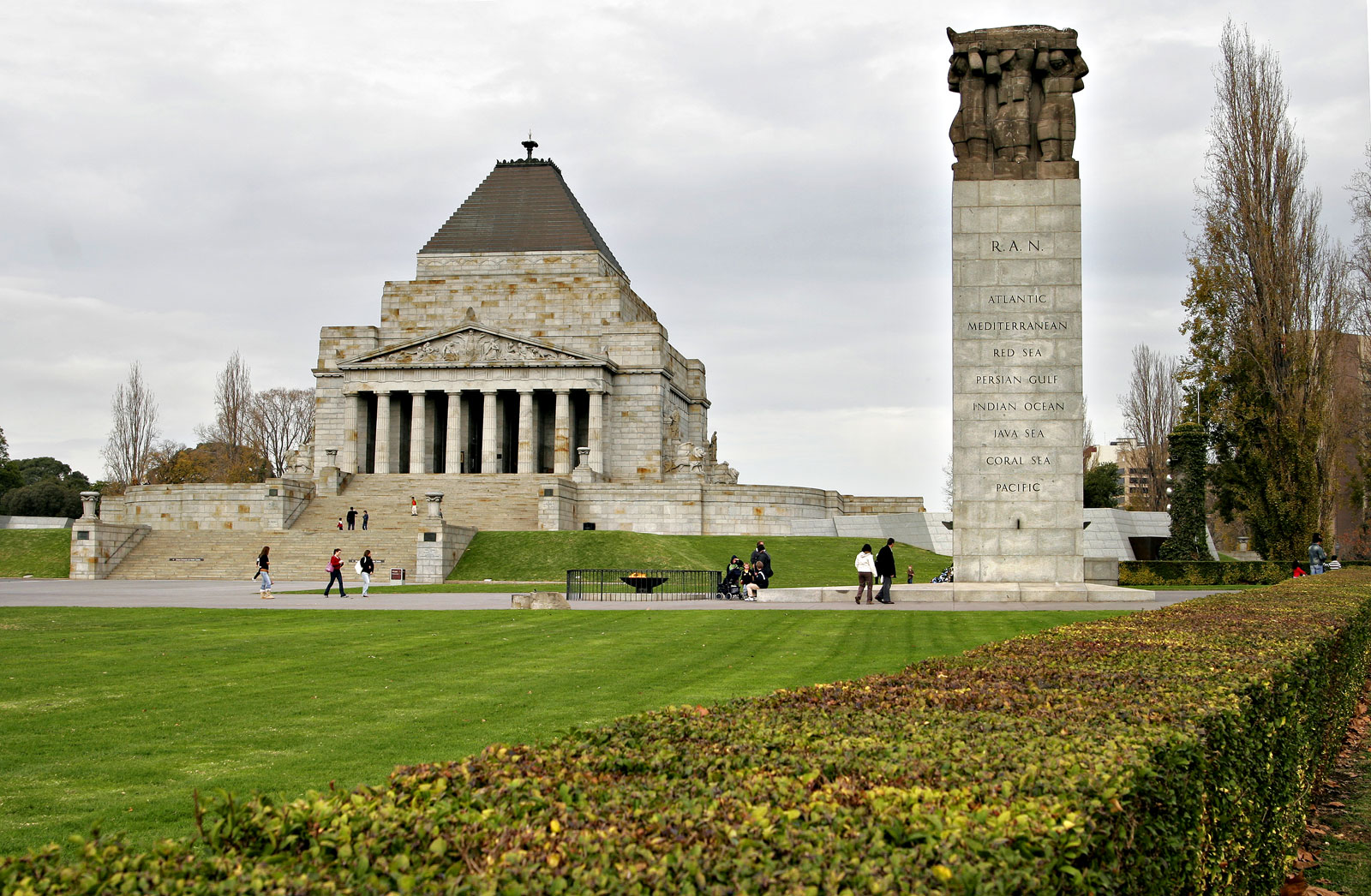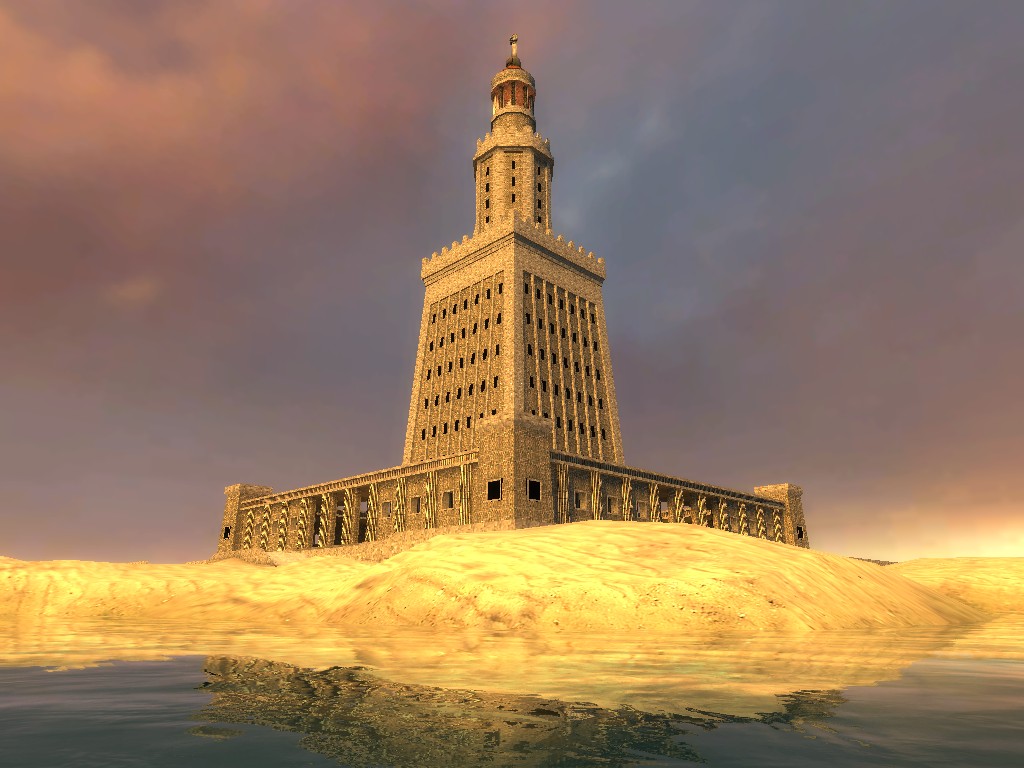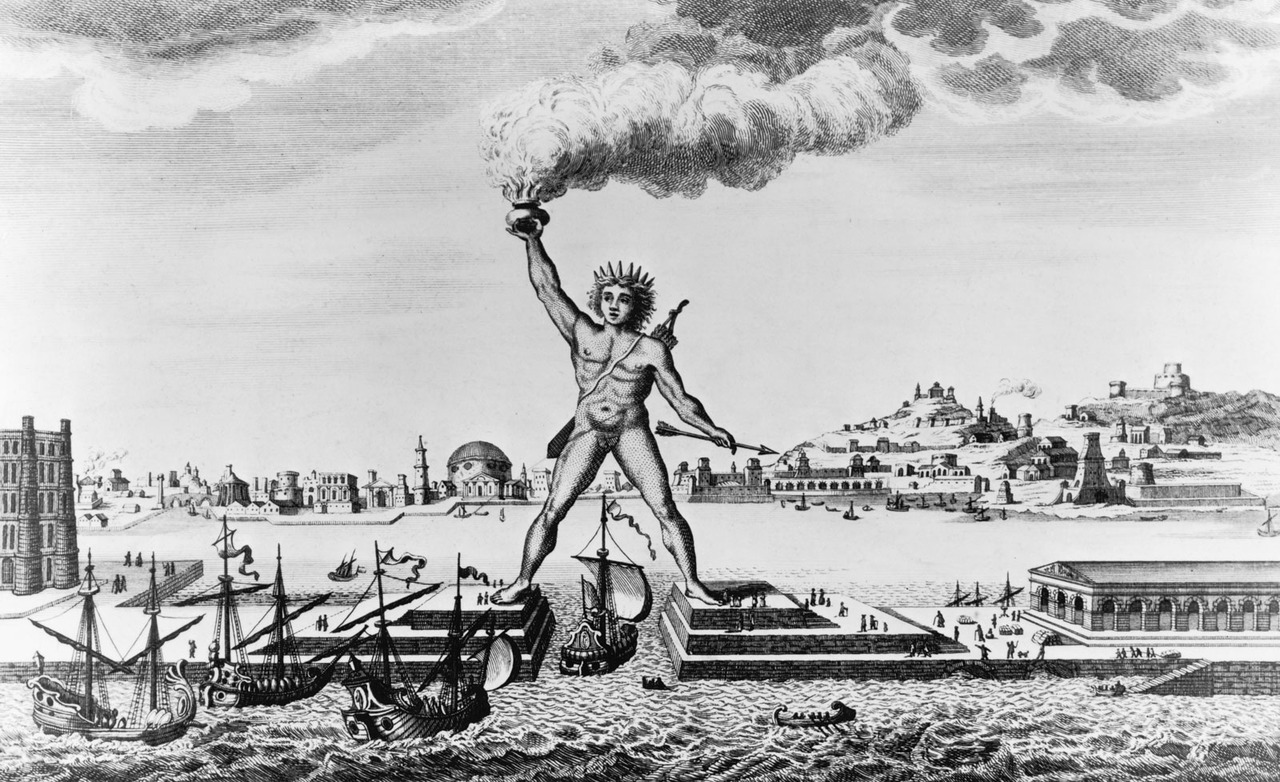Home » Seven Wonders of the World

The world is full of beautiful buildings, some of which are so exceptional that they have been designated as the new Seven Wonders of the World. Here is a list of some of the world’s most impressive buildings, including the Taj Mahal in Agra, India, The Great Wall of China in Beijing, The Christ the Redeemer Statue in Rio de Janeiro, Machu Picchu in Peru, Chichen Itza in Mexico’s Yucatan Peninsula, The Roman Colosseum in Rome, and Petra (Jordan). The campaign to select the new seven wonders was started in 2000 by the Swiss foundation 7 Wonders. In 2007, these seven were announced as the winners, and the whole list was made public. Since Philo of Byzantium categorized the first “Seven Wonders of the World” in 250 B.C., simply referring to the “Seven Wonders” is no longer explicit enough for an audience to comprehend the framework.
List of Seven Wonders of the World
Here are the List of Seven Wonders of the World
| Seven Wonders of the World | Place | Description |
| The Colosseum | Rome, Italy | It is also the largest amphitheatre in the world according to the Guinness Book of World Records. It was constructed about 80 CE. Commissioned during the first century of the Roman Empire by the Flavian emperors. |
| Machu Picchu | Cuzco Region, Peru | It was built as an Incan estate for the emperor Pachacuti in the 15th century, and it is approximately 8,000 feet (2,430 metres) above sea level. |
| Petra | Ma’an, Jordan | A miracle city carved out of rock was built in 312 BCE. |
| Taj Mahal | Agra, India | Shah Jahan, the Mughal emperor, built a stunning tomb to remember the death of his wife Mumtaj Mahal. Its construction began in 1632. |
| Cristo Redentor (OR) Christ the Redeemer Statue | Rio de Janeiro, Brazil | Its arms are 92 feet (28 metres) wide and 98 feet (30 metres) long. The list’s newest monument is this one. |
| Great Wall of China | China | It is 6,259 kilometres (3,889 miles) long. The oldest predecessors of the Great Wall of China were most likely built somewhere in the 7th century B.C.E., and it has since been gradually expanded. |
| Chichén Itzá | Yucatán, Mexico | This Mayan pyramid was built before Christopher Columbus by many hundred years. |
7 Wonders of the World
1. The Colosseum
The Flavian Amphitheatre usually referred to as the Colosseum or Coliseum, is a spectacular amphitheatre that was constructed in Rome and inaugurated in AD. 80 by Titus, the son of Vespasian, for a hundred days of games that included gladiatorial battles and animal contests. Despite the fact that two-thirds of the original structure has been damaged over time, it is one of the most well-known tourist locations.
| Situated in | Rome |
| Country | Italy |
| Built in | commissioned around A.D. 70-72 |
| Built by | Emperor Vespasian of the Flavian dynasty |
2. Machu Picchu
An Incan site in Peru called Machu Picchu was “found” by Hiram Bingham in 1911. It is close to the city of Cuzco. Vilcabamba, a covert Incan bastion used during the 16th-century revolt against Spanish domination, was what he thought it to be. It is one of the few recognized big pre-Columbian ruins that have been found almost intact.
| Situated in | Cusco Region, Urubamba Province, Machupicchu District |
| Country | Republic of Peru |
| Built in | Construction believed to be started in 1450–1460 |
| Built by | Incan Empire |
3. Petra
Petra is a remarkable historical and archaeological city in southern Jordan. It is also known as Raqmu or Rose City due to its colour. The Nabataean, a Bedouin Arab tribe that were native to the area in what is now southwest Jordan, are thought to have founded the city of Petra as a trade centre. Petra is situated around 150 miles south of Jerusalem and Amman, the capital of Jordan, and roughly halfway between Damascus, Syria, and the Red Sea, making it a centre of commerce in the region at the time.
| Situated in | Ma’an Governorate |
| Country | Jordan |
| Built in | 5th century BC |
| Built by | The Nabataean |
4. Taj Mahal
Agra, India’s Taj Mahal is a marble mausoleum complex and one of the best examples of Mughal architecture. Shah Jahan (reigned 1628–58) built it in memory of his wife Mumtz Maal, known as “Chosen One of the Palace,” who passed away in 1631 while giving birth to their 14th child. It is thought that 20,000 artisans worked on the Taj Mahal project under the direction of a board of architects who were knowledgeable at the time.
| Situated in | Agra, Uttar Pradesh |
| Country | India |
| Built in | 1632–53 |
| Built by | Emperor Shah Jahān |
5. Cristo Redentor (OR) Christ the Redeemer Statue
On Mount Corcovado in Rio de Janeiro, the Christ the Redeemer Statue, also known as Cristo Redentor, is a statue of Jesus in the Art Deco style. Heitor da Silva Costa designed the 130-foot statue, which is made of reinforced concrete and soapstone. Its construction cost about $250,000, the majority of which was obtained through contributions. It is 635 tonnes in weight and is situated on the Peak of Corcovado Mountain in the Tijuca Forest National Park, which provides views of Rio de Janeiro.
| Situated in | Corcovado mountain, Rio de Janeiro |
| Country | Brazil |
| Built in | 1922 – 31 |
| Built by | Designed by sculptor Paul Landowski and built by engineer Heitor da Silva Costa in collaboration with Albert Caquot. Sculptor Gheorghe Leonida created the face |
6. Great Wall of China
The Great Wall of China is a work of engineering that is believed to be roughly 5,500 miles (8,850 km) long, however the Chinese claim it is actually 13,170 kilometres long (21,200 km). The Great Wall of China was built over the course of two millennia, starting in the 7th century BCE. The goals of this spectacular organisation at the time included management of trade and emigration, border control, imposition of tariffs on Silk Road trade, and defence.
| Situated in | stretches across North China from east to west |
| Country | China |
| Built in | construction started in 7th century BC |
| Built by | Qin Dynasty, Ming dynasty |
7. Chichén Itzá
A Mayan metropolis in Mexico is called Chichen Itza. It is located on the Yucatán Peninsula, which had great prosperity in the ninth and tenth centuries A.D. The mythological great cities, or Tollans, that are mentioned in later Mesoamerican literature are also thought to include Chichen Itza. The city’s ruins contain religious structures from the Maya Civilization, like as the Temple of Kukulkán, which has 365 steps, one for each day of the Haab solar calendar.
| Situated in | Yucatán |
| Country | Mexico |
| Built in | 5th-13th century |
| Built by | Maya-Toltec civilization |
UPSC 2023 Related Links
Seven Wonders of the World FAQs
What is the official Seven Wonders of the World?
The Seven Wonders of the World are the Taj Mahal, the Colosseum, the Chichen Itza, Machu Picchu, Christ the Redeemer, Petra, and the Great Wall of China. Our world is filled with the most unique structures that are both man-made and natural.
What are the 7 Wonders of the World 2022?
1. Taj Mahal, Agra, India
2. Great Wall of China, Beijing, China
3. Machu Pichu, Peru
4. The Colosseum , Rome
5. Christ the Redeemer Statue, Brazil
6. Petra, Jordan — Petra: A rock cut past
7. Chichen Itza , Cancun, Mexico
Which of the 7 wonders of the world still exist?
Constructed around the year 2560 B.C., the great Pyramid at Giza is the only wonder that remains standing from the original list of seven.
Is Eiffel Tower a world wonder?
It is so because Eiffel Tower is not from the age of classical antiquities. all the original seven wonders of the world belong to b.c. period, while the effiel tower was constructed in 1889 and is the tallest structure in Paris- 324 metres (1,063 ft) tall.
What is considered the 8th wonder of the world?
One of the eight World Heritage Sites of Sri Lanka, Sigiriya is renowned for its 5th century pre-Christian frescoes. It has also been declared by UNESCO as the 8th Wonder of the World.
Download your free content now!
To download, General Studies PDF, please fill the form.
Download your free content now!
Congratulations!

We have received your details!
We’ll share General Studies Study Material on your E-mail Id.
Download your free content now!
We have already received your details!

We’ll share General Studies Study Material on your E-mail Id.
Incorrect details? Fill the form again here

UPSC Exams
- UPSC Online Coaching
- UPSC Notification 2023
- UPSC Syllabus 2023
- UPSC EPFO Notification 2023
- UPSC Prelims Syllabus
- UPSC Mains Syllabus
- UPSC Exam Pattern
- UPSC Age Limit 2023
- UPSC Calendar 2023
- UPSC Syllabus in Hindi
- UPSC Mains Result 2022
- UPSC Full Form
Latest Exam Notifications
- EPFO Recruitment 2023
- BPSC 68th Prelims Result 2023
- TNPSC Group 4 Result 2023
- UPSC Notification 2023
- BPSC Answer Key 2023
- BPSC Question Paper 2023
- CGPSC Answer Key 2023
- CGPSC Question Paper 2023
- MPPSC Notification 2023
- UPPSC Notification 2023










Recent Posts
- डेली करंट अफेयर्स for UPSC – 14 April 2023
- Enforcement Directorate, Structure, Objective, Power & Functions
- Daily Current Affairs for UPSC – 14 April 2023
- UPSC IES/ISS Notification 2023, Registration, Exam Date, Vacancy
- Editorial of the Day: AI and Laws In India (The Hindu)
- Case Study of the Day: Success of ZBNF in Andhra Pradesh
- Stats IQ: India’s Exports
- Dabba Trading
- National Party
- World Bank Reforms
- Extra-Judicial Killings
- Bhim Rao Ambedkar: Marking his Lasting Legacy
- Current Affairs 14th April 2023 for UPSC Prelims Exam
- UPSC CAPF Eligibility Criteria, Age limit, Educational Qualification
- BR Ambedkar Jayanti, Early Life, Contribution, Legacy and Death
- The Hindu Newspaper Analysis 14 April 2023
- डेली करंट अफेयर्स for UPSC – 13 April 2023
- Powers of the President, Financial, Diplomatic & Military Power
- Daily Current Affairs for UPSC – 13 April 2023
- Editorial of the Day: The Role of Parliamentary Committees (The Hindu)
- Case Study of the Day: Human Composting
- Stats IQ: India’s Nuclear Power
- Arbitration in India
- Impeachment of president in India, Meaning, Procedure and Impact
- Central Government Health Scheme (CGHS)
- Agnipath Scheme
- UPSC CAPF Cutoff, Check CAPF Previous Year Cutoff From 2014-2020
- Large Hadron Collider (LHC)
- Current Affairs 13th April 2023 for UPSC Prelims Exam
- UPSC CAPF Application Form 2023, Steps to Apply Online Form
NDA Exam 2023
- NDA Notification 2023
- NDA Form 2023
- NDA Syllabus 2023
- NDA Age Limit 2023
- NDA Admit Card 2023
- NDA Selection Process 2023
- NDA Previous Year Question Papers
- NDA Cut Off
- NDA Salary
- NDA 2 Result
CDS Exam 2023
- CDS Notification 2023
- CDS Syllabus
- CDS Age Limit
- CDS Eligibility
- CDS Exam Pattern
- CDS Previous Year Question Papers
- CDS SSB Interview
- CDS Admit Card
From Wikipedia, the free encyclopedia
This article is about natural and man-made phenomena and structures of the world. For other uses of «Wonders of the World», see Wonders of the World (disambiguation).
Map of places listed in various Wonders of the World lists (interactive map)
Various lists of the Wonders of the World have been compiled from antiquity to the present day, in order to catalogue the world’s most spectacular natural features and human-built structures.
The Seven Wonders of the Ancient World is the oldest known list of this type, documenting the most remarkable man-made creations of classical antiquity; it was based on guidebooks popular among Hellenic sightseers and as such only includes works located around the Mediterranean rim and in the ancient Near East. The number seven was chosen because the Greeks believed it represented perfection and plenty, and because it reflected the number of planets known in ancient times (five) plus the Sun and Moon.[1]
Seven Wonders of the Ancient World
The Greek historian Herodotus (484 – c. 425 BC) and the scholar Callimachus of Cyrene (c. 305–240 BC), at the Museum of Alexandria, made early lists of seven wonders. These lists have not survived, however, except as references in other writings.
The classic Seven Wonders were:
- Great Pyramid of Giza, in El Giza, Egypt, the earliest of the wonders to be completed, as well as the only one that still exists in the present day.
- Colossus of Rhodes, in the harbor of the city of Rhodes, on the Greek island of the same name.
- Hanging Gardens of Babylon, in Babylon, near present-day Hillah, Babil province, Iraq; or Nineveh, Mosul, Nineveh Governorate, Iraq.
- Lighthouse of Alexandria, in Alexandria, Egypt.
- Mausoleum at Halicarnassus, in Halicarnassus, a city of the Achaemenid Empire in present-day Turkey.
- Statue of Zeus at Olympia, in Olympia, Greece.
- Temple of Artemis at Ephesus, in the city of Ephesus, near present-day Selçuk, Turkey.
Lists from other eras
In the 19th and early 20th centuries, some writers emulated the classical list by creating their own lists with names such as «Wonders of the Middle Ages», «Seven Wonders of the Middle Ages», «Seven Wonders of the Medieval Mind», and «Architectural Wonders of the Middle Ages».[2] It is unlikely that any of these lists actually originated in the Middle Ages since the concept of a «Middle Age» did not become popular until at least the 16th century and the word «medieval» was not invented until the Enlightenment era. Brewer’s Dictionary of Phrase and Fable refers to them as «later list[s]»,[3] suggesting the lists were created after the Middle Ages.
Many of the structures on these lists were built much earlier than the Middle Ages but were well known throughout the world.[4][5] Typically representative of such lists are:[3][4][6][7]
- Catacombs of Kom el Shoqafa, a 2nd-century funerary complex in Alexandria, Egypt.
- Colosseum, a 1st-century amphitheatre in the centre of the city of Rome, Italy.
- Great Wall of China, a series of defensive fortifications built across the historical northern borders of China, with some segments dating to as early as the 7th century BC.
- Hagia Sophia, a 6th-century cathedral and mosque in Istanbul, Turkey.
- Leaning Tower of Pisa, a 12th-century bell tower in Pisa, Italy.
- Porcelain Tower of Nanjing, a 15th-century pagoda on the south bank of the external Qinhuai River in Nanjing, People’s Republic of China.
- Stonehenge, a Neolithic henge monument in Wiltshire, England dated to the 3rd millennium BC.
Other structures sometimes included on such lists include:
- Cairo Citadel, a 13th-century Islamic fortification in Cairo, Egypt.[8]
- Cluny Abbey, a 10th-century Benedictine monastery in Cluny, Saône-et-Loire, France.[9]
- Ely Cathedral, a (currently Anglican) cathedral originally built in the 11th century in Ely, Cambridgeshire, England.[10]
Recent lists
Following in the tradition of the classical list, modern people and organisations have made their own lists of wonderful things, both ancient and modern, natural and artificial. Some of the most notable lists are presented below.
American Society of Civil Engineers
In 1994, the American Society of Civil Engineers compiled a list of Seven Wonders of the Modern World, paying tribute to the «greatest civil engineering achievements of the 20th century».[11][12]
USA Today‘s New Seven Wonders
In November 2006, the American national newspaper USA Today and the American television show Good Morning America revealed a list of the «New Seven Wonders», both natural and man-made, as chosen by six judges.[14] The Grand Canyon was added as an eighth wonder on November 24, 2006, in response to viewer feedback.[15]
Seven Natural Wonders of the World
Similar to the other lists of wonders, there is no consensus on a list of seven natural wonders of the world, and there has been debate over how large such a list should be. One of many existing versions of this list was compiled by CNN in 1997:[16]
- Aurora, in the Earth’s high-latitude regions (around the Arctic and Antarctic)
- Grand Canyon, in Arizona, United States
- Great Barrier Reef, off the coast of Queensland, Australia
- Harbor of Rio de Janeiro, Brazil
- Mount Everest, on the border of Nepal and China
- Parícutin volcano, located in the state of Michoacán, Mexico
- Victoria Falls, on the border of Zambia and Zimbabwe
New 7 Wonders of the World
In 2001, an initiative was started by the Swiss corporation New7Wonders Foundation to choose the New 7 Wonders of the World from a selection of 200 existing monuments through online votes.[17] The Great Pyramid of Giza—part of the Giza Pyramids, the only remaining wonder of the traditional Seven Wonders of the Ancient World, was not one of the winners announced in 2007 but was added as an honorary candidate.[18][19]
| Wonder | Date of construction | Present-day location |
|---|---|---|
| Great Wall of China | Since 7th century BC[20] | China |
| Petra | c. 100 BC | Ma’an, Jordan |
| Christ the Redeemer | opened to the public October 12, 1931 | Rio de Janeiro, Brazil |
| Machu Picchu | c. AD 1450 | Urubamba Province, Peru |
| Chichén Itzá | c. AD 600 | Yucatán, Mexico |
| Colosseum | completed AD 80 | Rome, Italy |
| Taj Mahal | completed c. AD 1648 | Agra, India |
| Giza Pyramids (honorary candidates) | completed c. 2560 BC | Giza, Egypt |
New 7 Wonders of Nature
A similar contemporary effort to create a list of seven natural (as opposed to man-made) wonders chosen through a global poll, called the New 7 Wonders of Nature, was organized from 2007 to 2011 by the same group as the New 7 Wonders of the World campaign.
- Iguazu Falls, on the border of the Argentine province of Misiones and the Brazilian state of Paraná
- Hạ Long Bay, in Quang Ninh Province, Vietnam
- Jeju Island, in the Jeju Province of South Korea
- Puerto Princesa Underground River, in Palawan, Philippines
- Table Mountain, overlooking the city of Cape Town, South Africa
- Komodo Island, one of the 17,508 islands that comprise the Republic of Indonesia
- Amazon rainforest, located in Brazil, Peru, Colombia, Venezuela, Ecuador, Bolivia, Guyana, Suriname, and French Guiana
New 7 Wonders Cities
New 7 Wonders Cities, a third list organized by New7Wonders and determined by another global vote, includes entire cities:
- Durban, South Africa
- Vigan, Philippines
- Havana, Cuba
- Kuala Lumpur, Malaysia
- Beirut, Lebanon
- Doha, Qatar
- La Paz, Bolivia
Seven Wonders of the Underwater World
The list of «Seven Wonders of the Underwater World» was drawn up by CEDAM International, an American-based non-profit group for divers that is dedicated to ocean preservation and research. In 1989, CEDAM brought together a panel of marine scientists, including Eugenie Clark, to choose underwater areas which they considered worthy of protection. The results were announced at The National Aquarium in Washington, D.C., by actor Lloyd Bridges, star of TV’s Sea Hunt:[21]
- Palau
- Belize Barrier Reef, Belize
- Great Barrier Reef, Australia
- Deep-sea hydrothermal vents (worldwide)
- Galápagos Islands, Ecuador
- Lake Baikal, Russia
- Northern Red Sea, bordered by Saudi Arabia and Yemen on the eastern shore, and Egypt, Sudan, Eritrea, and Djibouti on the western shore
Seven Wonders of the Industrial World
British author Deborah Cadbury wrote Seven Wonders of the Industrial World, a book telling the stories of seven great feats of engineering of the 19th and early 20th centuries.[22] In 2003, the BBC aired a seven-part docudrama exploring the same feats, with Cadbury as a producer. [23]
- SS Great Eastern, British oceangoing passenger steamship, launched in 1858
- Bell Rock Lighthouse, in the North Sea off the coast of Angus, Scotland, completed in 1810
- Brooklyn Bridge, in New York City, New York, United States, opened to traffic in 1883
- London sewerage system, serving London, England since the late 19th century
- First transcontinental railroad, 1,912-mile (3,077 km) continuous railroad line connecting existing rail networks in Iowa, Nebraska, Wyoming, Utah, Nevada, and California in the United States, completed in 1869
- Panama Canal, 51-mile (82 km) artificial waterway crossing the Isthmus of Panama and connecting the Atlantic and Pacific oceans, completed in 1914
- Hoover Dam, on the Colorado River, spanning the border between Nevada and Arizona in the United States, completed in 1936
Seven Wonders of the Solar System
In a 1999 article, Astronomy magazine listed the «Seven Wonders of the Solar System». This article was later made into a video.[24]
- Enceladus, a moon of Saturn
- The Great Red Spot of Jupiter, a massive and persistent anticyclonic storm in the planet’s southern hemisphere
- The asteroid belt, a region of innumerable small solid bodies located between the orbits of Mars and Jupiter
- The surface of the Sun
- The oceans of Earth
- The Rings of Saturn
- Olympus Mons, an enormous shield volcano on Mars and the tallest planetary mountain in the Solar System
Other lists of wonders of the world
Many authors and organisations have composed lists of the wonders of the world that have been published in book or magazine form.
Seven Wonders of the World is a 1956 film in which Lowell Thomas searches the world for natural and artificial wonders and invites the audience to try to update the ancient Wonders of the World list.
See also
- Eighth Wonder of the World
- National Seven Wonders
- Seven Wonders of Canada
- Seven Wonders of Colombia
- Seven Wonders of Poland
- Seven Wonders of Portugal
- Seven Natural Wonders of Romania
- Seven Wonders of Romania
- Seven Wonders of Russia
- Seven Wonders of Ukraine
- Seven Wonders of Wales
- Seven Wonders of Dauphiné
- 12 Treasures of Spain
- Seven Wonders of Fore (Fore Abbey, Ireland)
- World Heritage List – a list of over 900 sites deemed by UNESCO to be of «outstanding universal value»
- Seven Horticultural Wonders of the World
Notes
- ^ Both the USA Today article and the Good Morning America broadcast described this wonder as «Jerusalem’s Old City, Israel.» The Old City is located in East Jerusalem, which is claimed by both the State of Israel and the State of Palestine. The UN and most countries do not recognize Israel’s claim to East Jerusalem, taking the position that the final status of Jerusalem is pending future negotiations between Israel and the Palestinian Authority. See Positions on Jerusalem for more information.
References
- ^ Anon. (1993). The Oxford Illustrated Encyclopedia (First ed.). Oxford: Oxford University.
- ^ «The Seven Wonders of the Medieval World»
- ^ a b Evans, I H (reviser (1975). Brewer’s Dictionary of Phrase and Fable (Centenary edition Fourth impression (corrected) ed.). London: Cassell. p. 1163.
- ^ a b Hereward Carrington (1880–1958). The Seven Wonders of the World: ancient, medieval and modern, reprinted in the Carington Collection (2003). ISBN 0-7661-4378-3.
- ^ Carrington, Hereward (September 2010). The Carrington Collection. ISBN 9781169692169. Archived from the original on December 1, 2020. Retrieved October 29, 2014.
- ^ Latham, Edward (1904). A Dictionary of Names, Nicknames and Surnames, of Persons, Places and Things. p. 280. OCLC 01038938.
- ^ Miller, Francis Trevelyan (1915). America, the Land We Love. p. 201. OCLC 00334597. Archived from the original on December 1, 2020. Retrieved October 16, 2020. Excerpts from speeches by Woodrow Wilson, William H. Taft, and Theodore Roosevelt.
- ^ The Complete Idiot’s Guide to the Crusades. 2001. p. 153.
- ^ Herbermann, Charles George, ed. (1913). Cluny Abbey. The Catholic Encyclopedia. Vol. 4. p. 73. OCLC 06974688. Archived from the original on December 1, 2020. Retrieved October 16, 2020.
- ^ The Rough Guide To England. 1994. p. 596.
- ^ «American Society of Civil Engineers Seven Wonders». ASCE.org. July 19, 2010. Archived from the original on August 2, 2010. Retrieved August 30, 2010.
- ^ American Society of Civil Engineers. «Seven Wonders of the Modern World». ASCE.org. Archived from the original on April 2, 2010.
- ^ «USGS: Three Gorges Dam is bigger than Itaipu Dan but annual output is about the same because of river variability». Archived from the original on April 27, 2020. Retrieved October 9, 2019.
- ^ «New Seven Wonders panel». USA Today. October 27, 2006. Retrieved July 31, 2010.
- ^ Clark, Jayne (December 22, 2006). «The world’s 8th wonder: Readers pick the Grand Canyon». USA Today. Archived from the original on June 19, 2012. Retrieved May 3, 2013.
- ^ «Natural Wonders». CNN. November 11, 1997. Archived from the original on July 21, 2006. Retrieved July 31, 2010.
- ^ «The multimedia campaign to choose the New 7 Wonders of the World is in its final stage». New7Wonders. Archived from the original on January 3, 2007. Retrieved June 10, 2015.
- ^ «Egypt’s pyramids out of seven wonders contest». Daily News Egypt. April 20, 2007. Archived from the original on June 25, 2018. Retrieved June 25, 2018.
- ^ «Reuters via ABC News Australia «Opera House snubbed as new Wonders unveiled» 7 July 2007″. Australia: ABC. July 8, 2007. Archived from the original on June 29, 2011. Retrieved July 31, 2010.
- ^ «Great Wall of China». Encyclopædia Britannica. Archived from the original on May 2, 2015. Retrieved February 16, 2012.
- ^ «Underwater Wonders of the World». Wonderclub. Archived from the original on June 13, 2017. Retrieved August 31, 2010.
- ^ Kumar, Manjit (November 7, 2003). «Review: Seven Wonders of the Industrial World by Deborah Cadbury». The Guardian. Archived from the original on September 21, 2016. Retrieved December 13, 2016.
- ^ Cadbury, Deborah (February 17, 2011). «British History in Depth: Seven Wonders of the Industrial World». Archived from the original on December 27, 2019. Retrieved March 25, 2015.
- ^ «Seven Wonders of the Solar System Video». Aaa.org. 1999. Archived from the original on April 1, 2014. Retrieved February 22, 2014.
External links
- 77 Wonders of the World in 360° A list of world wonders linking the ancient 7 Wonders of the World and the World Heritage List by UNESCO
The 7 Wonders of the World are a list of ancient monuments built between the 3rd millennium BC for the oldest and the 3rd century BC for the most recent.
They have the characteristics of having marked their eras, giving glory to the civilizations that erected them. Here is the list.
Listen to the program «La curiosité est un vilan défaut» on 27/02/2017 (in french), a program broadcast on RTL and presented
by Sidonie Bonnec and Thomas Hugues. They received Olivier Lemaître, editor-in-chief of the magazine Historia, who explains in a playful and very
clear way what these seven wonders of the World were.
A good moment!
Sorry your navigator isn’t compatible
Where were the 7 wonders of the ancient world?
They are all in a geographical area ranging from Mediterranean Europe to Asia Minor. Five of them are in an area of influence of the ancient Greek
empire, two in that of ancient Egypt and the last is in the ancient city of Babylon, now approximately 50 km south of Baghdad, in Iraq. Only one of
these seven wonders is still standing today, the pyramid of Cheops, The statue of Zeus,
the colossus of Rhodes and the hanging gardens of Babylon have no trace today,
so much so that the existence of gardens is debatable and discussed. On the other hand, the lighthouse of Alexandria,
the temple of Artemis and the mausoleum of Halicarnassus all have vestiges
visible today, so we know perfectly where they were and what were their environments of the time.
Learn more about the location of the 7 wonders.
Maartens van Heelkerck
Maartens van Heelkerck was a Dutch historical painting of the sixteenth century. He is known for making engravings of a series called «The 7 Wonders
of the World». If these works are artistically interesting, they are much less from a documentary point of view but still deserve a glance.
Learn more about Maartens van Heelkerck.
The pyramid of Cheops
The term «Wonder» was applied to the great pyramid of Kheops for the first time by Herodotus, in the 5th century BC. Other celebrities of antiquity
will also do so, like Diodorus of Sicily, then Strabon (1st century BC), and Pliny the Elder (1st century BC).
Always accompanied by those of Kephren, Mykérinos and those of the three queens, the Pyramid of Kheops is the highest in the world. It was built in
the seventeenth century BC on the Giza plateau near the ancient capital of the Empire, Memphis, west of Egypt’s present capital, Cairo. The pyramid of
Cheops, like those of its immediate successors Kephren and Mykerinos, is the only one of the seven wonders of the ancient world still visible today,
the others having either been completely destroyed or, state of ruins.
If one ignores the details of the construction, it seems that it took twenty years to build it, with the help of thousands of workers. It required
2 300 000 blocks of white granite and limestone (which were used for its coating), each block weighing between 2.5 and 15 tons. The way in which these
blocks were hoisted over each other gave rise to many assumptions, given the technical means of the time. The most plausible is that of stacking the
blocks with a helical ramp of raw brick, a ramp that was later destroyed. This thesis, held by the Egyptologist Georges Goyon, is one of those that
hold the most road today.
Its dimensions are quite simple, it is based on a square plan of 230m of side, which makes almost 1 Km of perimeter. These four sides are oriented
towards the cardinal points. The angle of elevation is 51 ° with respect to the ground, which goes up to 146m of height. Currently, it is only 136m
because it is truncated.
Its role was to serve as the tomb of the Pharaoh, just like the other pyramids of the area. There are other assumptions about the usefulness of
the pyramid, if they can sometimes have a scientific background, most are highly fanciful.
Learn more about the Pyramid of Cheops.
The hanging gardens of Babylon
The history of the city of Babylon begins in the second half of the third millennium BC, relatively early in the history of mankind. The city is going
to be the center of an Empire that will spread throughout the second millennium and then expand to the top of the empire during the reign of Nebuchadnezzar
(605-562 BC). The city was then covered of various splendours, for example the famous gate of Ishtar, one of the 100 gates of the city:
I put it in bricks enamelled in blue on which were represented wild bulls and dragons. I had it placed above it to cover it with cedar beams. I placed
in its gates copper-covered wings, hinges and bronze supports. I embellished this door in order to make the admiration of all the people.
Many other buildings, including the summer palace and a gigantic bridge spanning the Euphrates, embellished the city. And of course, in this context,
the gardens were seen as havens of happiness, to possess it meant the wealth of its owner. The most important were made for the bride of Nebuchadnezzar,
Amytis, daughter of the king of the Medes. If their very existence is sometimes subject to discussion, the traces that we have of them through various
testimonies, rarely direct, indicate that it would be a terrace at 20m high trapezoidal shape whose long side measured 120m . They were irrigated by
canals coming from the Euphrates and whose water was mounted on the terrace by a system of worms. The composition of these gardens is unknown at this
time.
At the end of the 19th century archaeologists found traces of what might be the hanging gardens of which Herodotus, Diodorus of Sicily, Stabon — who
described the Lighthouse of Alexandria — and Quintus Curce speak, but these remains are truly subject to caution.
Learn more about the hanging gardens of Babylon.
the statue of Zeus
Do you know what a chryselphantine statue is? Well, it is simply a statue of gold and ivory, like this statue of Zeus, built by Phidias,
around 430 BC. It was in the temple of Zeus in Olympia, a temple that was built on the remains of another temple dedicated to Hera, towards the end of the
6th century BC. In honor of Zeus of the Sports Games were organized, but gradually the games gained momentum and it was necessary to build a temple to the
glory of Zeus himself, which was done between 470 and 456 BC.
This temple was destroyed by an earthquake, the stones recovered and reused. At the end of the 4th century Theodosius forbade the Olympic Games, since
they celebrated a pagan cult, it was from this that the destruction of the temple was definitive.
As for the statue, it is difficult to know its exact description which has disappeared, but one can trust Pausanias who lived in the 2nd century AD and
who described it as follows:
[…] sitting on his throne … He carries on his head a crown of olive branches. in his right hand he carries a statue of victory … in his left hand
a scepter … with an eagle perched at the top … The throne is adorned with painted animals and drawings of statues […] The base the other ornaments
decorating the statue are in gold. In addition to Zeus, there are Helios in his chariot, Hera, Hermes, Aphrodite, Apollo, Artemis, Athena, Amphitrite,
Poseidon, and Herakles.
It was transported to Contantinople of the 4th century, a city under the influence of the Eastern Roman Empire. A fire in 475 caused the final destruction
of the statue of which we have no trace today.
Learn more about the Statue of Zeus.
The temple of Artemis
The temple of Artemis is located in the city of Ephesus, an ancient city whose vestiges are currently in Turkey. Founded at the end of the eleventh century
BC, this city was conquered by the Persian Empire, as was the rest of Asia Minor. In the 10th century BC Ephesus was one of the main cities of Greek culture
and commerce on this coast, so the relations between Ephesus and ancient Greece were essentially commercial. During the 6th century BC, Cresus, rich king of
Lydia, financed the construction of a temple called the Artemesion, a temple where the population venerated a mother goddess whom the Greeks later assimilated
to Artemis.
The Greeks having conquered the Persian Empire under Alexander the Great, Ephesus became a Greek city. This temple was dedicated to Artemis. It was 115m
long by 55m wide and was surrounded by columns of fluted marble with carved and painted capitals, as well as a large frieze and sculptured pediments.
It was partially destroyed by wars, restored and finally burnt down in 356 by Erostrate, an Ephesian. A few years later it was rebuilt by raising it to
highlight it. The sculptors Scopas and Praxiteles, as well as the painter Apelles, worked there. It was again ruined during the 1st century by the armies of
Nero, then by the Goths (in 263), and finally abandoned when King Theodosius forbade pagan cults in the 4th century. He then served, as is often the case,
as a source of stone to build other buildings.
The temple contained a wooden statue of Artemis later covered with gold, a crown of crenelated walls (a symbol of power), the body carrying mammals (Animal
Mother’s Symbols) and animal figurines.
Learn more about the Temple of Artemis.
The mausoleum of Halicarnassus
Halicarnassus was the capital of the kingdom of Caria on the Turkish coast of the Aegean. Nowadays it is a stone’s throw from the city of Bodrum. This
kingdom was a possession of the Persian Empire, whose king was Ataxerxes Mnemon. His satrap (a satrap, a governor) overthrew him and proclaimed the independence
of the kingdom of Caria. It was at this moment that he moved his capital to Halicarnassus. This new king was called Mausole.
He married his sister Artemise II, who built her a splendid tomb at Halicarnassus after her death in 453 BC. It was a building of about fifty meters in
length decorated with a splendid quatre, statue of a chariot pulled by 4 horses a priori posed at the top of the monument. Nowadays there is not much left of
the building that was demolished in the 14th century to recover stones in order to build fortifications to protect the island of Rhodes not far away. We still
have portions of friezes and statues that are visible today in the British Museum.
And for those who would ask the question, the word «mausoleum» comes from King Mausole, his name has become a common name — as the island of Pharos, in
Alexandria, gave the name «Phare» to the building which was there.
Learn more about the Mausoleum of Halicarnassus.
the colossus of Rhodes
The Colossus of Rhodes is the most ephemeral of the seven wonders of the ancient world. It was built in 303 BC and destroyed by an earthquake in 224 BC.
It took only 12 years to build it with a well-established technique. This statue was in bronze and depicted Apollo, it was installed — a priori at the
entrance to the port of Rhodes — but some specialists think it could have been built a little further.
This statue was 34 m high and symbolized the richness of the island of Rhodes. It was intended to impress the merchant mariners who entered the port.
Its history being short, it must be known that when it was destroyed, the ruins remained on the spot until the 7th century before the bronze was
recovered and sold.
Learn more about the Colossus of Rhodes.
The lighthouse of Alexandria
Built during the 3rd century BC under Ptolemy I and inaugurated under the son of Ptolemy II, the lighthouse of Alexandria was described by many travelers
until the 14th century, when it was destroyed by a more violent earthquake than the others . It was long attributed to the architect Sostrate of Cnidus, but
nowadays it seems that this person, very rich and close to the king, was only the sponsor of the summit statue. It is actually the only name found on the
vestiges of the lighthouse, which is why it is so often associated with this monument.
Many different stories but the descriptions of the monument are relatively identical, especially for its general form. We can therefore estimate that it
resembles this description, namely: From a height of more than 130m, it consisted of 3 perfectly
distinct parts. The lower part was square, the second octagonal, and the third, much shorter, cylindrical. At the top was a statue whose representation is
still subject to discussion today.
Alexandria was founded in 331 BC by Alexander the Great during his conquest of the Persian Empire. In Egypt he was welcomed as a liberator. At the
time of his death, in 323 BC, he was one of his generals, Ptolemy, who took the office of satrap of Egypt (a satrap, a governor), but soon succeeded
in taking the king’s crown. He is the founder of the Lagide (or Ptolemaic) dynasty which will end in -30 under Cleopatra during the conquest of Egypt
by the Roman Emperor Octave-Auguste. During these three centuries Alexandria was the most important city in the Hellenistic world, from the commercial,
intellectual and artistic point of view.
There were several underwater excavation campaigns on the site. The first
of these took place in 1968 by the British archaeologist Honor Frost, and they enabled us to judge the archaeological interest of the site. Others took
place but did not go on until 1994 when Mr Jean-Yves Empereur took over the excavations carried out under the aegis of the French Institute of Eastern
Archeology and under the auspices of the Center d’études alexandrines which he directed. Various excavation campaigns made it possible to extract important
archaeological material from the waters, including a very beautiful statue of Ptolemy, known as the Colossus of Ptolemy.
Learn more about the Lighthouse of Alexandria.
Holding a great historical significance and symbolizing cultural heritage, both the old and the new 7 wonders of the world are a must for every traveller to explore once in a lifetime. Each wonder boasts its uniqueness and that’s what attracts vacationers from all across the globe. Though only the ruins remain of the majority of the old wonders, travellers can surely witness the charm of the new wonders of the world with exciting international tour packages. Take a look!
Wish to know about the old seven wonders of the world? Here are the details about the old 7 gems of the world:
1. The Great Pyramid of Giza
Image Source
Of all the ancient seven wonders of the world, the Great Pyramid of Giza is the one and only wonder that has survived to stand tall through thick and thin. Constructed between the period of 2584 BC & 2561 BC, it is the largest of all three pyramids with a base of about 230.4 metres, and a height of 146.5 metres.
Best Time To Visit: September to April
Location: Al Haram, Nazlet El-Semman, Al Haram, Giza Governorate, Egypt
Nearby Attractions: Great Sphinx of Giza, Giza Plateau, Grand Egyptian Museum, and more.
Other Things To Do In Giza: Sightseeing, sound and light show in Giza, camel safari, quad biking, horseback riding, and more.
20 Ancient Lost Cities Of The World That Were Eventually Discovered
2. Temple of Artemis at Ephesus
Image Source
Considered to be one of the architectural masterpieces in the list of 7 wonders of the world, only the ruins remain of the great Temple of Artemis at Ephesus, which was destroyed by calefaction and floods. Located right in the heart of Turkey, the temple was unearthed again in 1869 in the city of Izmir and was recognized as the World Heritage Site in the year of 2014.
Best Time To Visit: April to May and from September to mid November
Location: Atatürk Mahallesi, Dr. Sabri Yayla Blv., İzmir, Turkey
Nearby Attractions: Hagia Sophia, Topkapı Palace, Sultan Ahmed Mosque, and more.
Other Things To Do In Turkey: Explore the thermal spa terraces at Pamukkale, shopping at Grand Bazaar, explore the Spice Bazaar, and more.
3. Hanging Gardens of Babylon
Image Source
Though the ruins of Babylon are established in the city of Al-Hillah in Iraq currently, the existence of the Hanging Gardens of Babylon remains as mysterious as ever. It is believed that around 600 BC, King Nebuchadnezzar built the Hanging Gardens for his wife Amytis which did not really hang. However, this ancient wonder remains open to the speculations of historians who often find themselves blank due to the lack of evidence of any kind in the Babylonian history.
Best Time To Visit: October to November
Location: Al-Hillah, Iraq
Nearby Attractions: Sami Abdulrahman Park, Citadel of Arbil, Erbil-Kurdistan, and more.
Other Things To Do In Iraq: Shopping in Family Mall, explore the Iraq Museum in Baghdad, visit the Amna Suraka in Sulaymaniyah, and more.
Their Honeymoon Trip To Europe Was So Beautiful, It Looks Like A Dream
4. The Lighthouse of Alexandria
Image Source
Much famed to be the pride of the Ptolemaic Kingdom, the Lighthouse of Alexandria was built between between 280 and 247 BC. At a height of about 450 ft. tall, the lighthouse remained the tallest architectural marvel in the world for a very long time until it was completely shattered by earthquakes in between 956 AD and 1323 AD.
Best Time To Visit: March to April and late September to early November
Location: Pharos, Alexandria, Egypt
Nearby Attractions: Bibliotheca Alexandrina, Montazah Palace Gardens, Fort Qaitbey, and more.
Other Things To Do In Alexandria: Explore the Catacombs of Kom el Shoqafa, visit Pompey’s Pillar, enjoy a heritage tour in Alexandria, and more.
Planning your holiday but confused about where to go? These travel stories help you find your best trip ever!
5. Statue of Zeus at Olympia
Image Source
Dedicated to the famous Greek God of Zeus, the Statue of Zeus is located in the heart of Olympia that is set on the western coast of Greece and is famous for Olympic Games. A massive statue that once stood tall at a height of 42 ft., was completely sculpted in wood first and later, was later covered with ivory and gold panels. Destroyed in an unfortunate fire during the 5th Century AD, the statue took about 12 years to be perfected by Phidias, the sculptor.
Best Time To Visit: Mid-April to mid-June or September to mid-October
Location: Olympia, Greece
Nearby Attractions: Archaeological Museum of Olympia, Temple of Hera, Philippeion, and more.
Other Things To Do In Olympia: Explore Ancient Olympia, visit Temple of Olympian Zeus in Athens, and more.
8 Favourite Incredible India Ads That Will Strike A Chord In Your Heart
6. Mausoleum at Halicarnassus
Image Source
A tomb built for Mausolus, the ruler of Caria and a Persian Governor, it took four Greek sculptors to perfect Mausoleum at Halicarnassus to a height of 45 meters between 353 BC & 350 BC. Being one of the 7 wonders of the world which survived to a great extent, Mausoleum at Halicarnassus was eventually shattered by a successive series of earthquakes.
Best Time To Visit: April to May and October to November
Location: Tepecik Mahallesi, Bodrum, Mugla, Turkey
Nearby Attractions: Kaunos Beach, Bodrum Castle, Tlos, Marmaris Castle, and more.
Other Things To Do In Mugla: Paragliding in Babadag, explore the beaches of Sedir Island, camping in Butterfly Valley, Fethiye, and more.
7. Colossus of Rhodes
Image Source
Remember the giant statue in Game of Thrones? Well it does not come as a surprise to know that the inspiration was taken from the famous Colossus of Rhodes. Signifying the victory over Antigonus I Monophthalmus – the ruler of Cyprus, Colossus of Rhodes, the statue of Greek God of Sun, was constructed in 280 BC and was destroyed to ruins post 54 years in an earthquake.
Best Time To Visit: April to May and October to November
Location: Rhodes, Greece
Nearby Attractions: Kastello, Acropolis of Rhodes, Tsambika Beach, Filerimos, and more.
Other Things To Do In Rhodes: Windsurfing and kitesurfing at Prasonisi, explore the Valley of Butterflies, enjoy snorkeling at Antony Quinn Bay, and more.
12 Best Islands In Europe For Honeymoon
Seven New Wonders Of The World
Selected from over 200 iconic landmarks and buildings, here are the majestic sites that made it into the list featuring seven new wonders of the world.
1. Taj Mahal, India
Built by the famous Mughal Emperor, Shah Jahan for its favorite wife, Mumtaz Mahal, the iconic structure of Taj Mahal, is the pride of India and more importantly, an epitome of love. Built as early as in the 16th century, Taj Mahal is the crown of India which is constructed purely of ivory-white marble and is best witnessed during sunrise.
Height: 73 meters
Timings: 8 am to 5 pm; During Full Moon: 8.30 pm to 12.30 am
Best Time To Visit: November to March
Location: Dharmapuri, Forest Colony, Tajganj, Agra, Uttar Pradesh
Nearby Attractions: Tomb of I’timad-ud-Daulah, Mehtab Bagh, Jama Mosque, Agra Fort, and more.
Other Things To Do In Agra: Sightseeing in Agra, tour the Khas Mahal, shopping in Kinari Bazaar, visit the Jehangir’s Palace, and more.
2. Christ the Redeemer, Rio de Janeiro
Located atop the Corcovado Mountain in Tijuca Forest National Park, the wondrous statue of Christ the Redeemer is perched at a height of 700 metres. Overlooking the city of Rio de Janeiro and constructed during the period of 1922 to 1931, the statue is not only the symbol of Christian community but is also one of the iconic landmarks of Brazil and Rio.
Height: 38 meters
Timings: 8 am to 7 pm
Best Time To Visit: December to March
Location: Parque Nacional da Tijuca – Alto da Boa Vista, Rio de Janeiro, Brazil
Nearby Attractions: Copacabana Beach, Sugarloaf Mountain, Ipanema, Maracanã Stadium, and more.
Other Things To Do In Rio de Janeiro: Witness the Brazilian heritage at Santa Teresa, trek through Tijuca Forest – the largest urban forest, enjoy shopping in Leblon, and more.
3. Great Wall Of China
Stunning as it looks, Great Wall of China is one of the those 7 wonders of the world that need no introduction. Encompassing of defensive fortifications that are a perfect blend of bricks, rammed earth, wood, stones, and other substances, the Great Wall of China was built to protect the Chinese region from invasions of empires during 7th century BCE.
Stretch: 21,196 kilometers
Timings: 7.30 am to 5.30 pm
Best Time To Visit: September to October
Location: Huairou, Beijing, China
Nearby Attractions: The Forbidden City, Temple of Heaven, Tiananmen Square, Summer Palace, and more.
Other Things To Do In Beijing: Explore Beihai Park, go shopping in Wangfujing, hiking in Mutianyu, and more.
A 2022 Compilation Of 59 Weirdest Places Across the World You Should Stop By
4. Petra, Jordan
Located in the southwestern desert of Jordan, Petra is the world-famous archaeological site that once served as the Nabatean Kingdom’s capital. Boasting of its one of a kind pink sandstone cliffs out of which the tombs and temples are sculpted, Al Khazneh is the most famous temple of all. Featuring a facade known as the Treasury, Petra reflects the authentic Greek architecture that attracts millions of travelers across the world.
Best Time To Visit: March to May
Location: Jordan
Nearby Attractions: Dead Sea, Wadi Rum, Mount Nebo, Roman Theater, Ajloun Castle, and more.
Other Things To Do In Jordan: Visit the Jordan River, hike the Dana Biosphere Reserve, explore the Jordan Museum, and more.
5. Machu Picchu, Peru
Perched high on the Andes Mountains and built of limestones that are mortar-free, Machu Picchu is one of the most classic 7 wonders of the world. Dating back to the 15th century, Machu Picchu in Peru is the most renowned structure of the Inca civilization which is famous for its dry-stone walls.
Elevation: 7,970 ft. above sea level
Best Time To Visit: April to October
Location: Mountain Machu Picchu, Peru
Nearby Attractions: Sacred Valley, Colca Canyon, Saksaywaman, Islas Ballestas, and more.
Other Things To Do In Peru: Enjoy hiking and backpacking through Inca Trail, mountaineering at Huascarán mountains, hike through Cordillera Blanca, and more.
15 Marvelous Natural Pools Of The World You’d Want To Plunge Into Right Away
6. Chichen Itza, Mexico
The renowned structure of Mayan ruins, the city of Chichen Itza boasts of a World Heritage Site of a massive temple – El Castillo, built in the shape of a pyramid. Dedicated to the God of Kukulkan, the structure consists of 91 steps on each side which when totalled with the final step of the temple, equals the number of days in one Haab year, i.e., 365 days.
Height: 30 meters
Timings: 8.30 am to 4.30 pm
Best Time To Visit: December to March
Location: Yucatan, Mexico
Nearby Attractions: Kabah, Pyramid of the Magician, Ik Kil, St. Ildephonsus Cathedral, Ek Balam, and more.
Other Things To Do In Yucatan: Caving at Cenote Zaci, explore the Sacred Cenote, visit the Sayil, adore the charm of Museo Maya, and more.
7. Colosseum, Rome
One of the major tourist attractions of Rome, the Colosseum is indeed one of the iconic 7 wonders of the world. Constructed mainly of sand and concrete, Colosseum is the largest surviving amphitheatre in the world. Built during the time between 70 AD to 72 AD by the famous Emperor Vespasian, Colosseum is much famed as the Flavian Amphitheatre that continues to charm the travellers today.
Height: 48 meters
Timings: 8.30 am to 3.30 pm
Best Time To Visit: October to April
Location: Piazza del Colosseo, 1, Roma, Italy
Nearby Attractions: Pantheon Temple, Roman Forum, Trevi Fountain, St. Peter’s Basilica, Vatican Museums, and more.
Other Things To Do In Rome: Explore the nightlife at Piazza Navona, admire Michelangelo’s paintings at Sistine Chapel, explore the Palatine Hill, and more.
35 Exotic Places To Visit In December In India 2023 To Enjoy A Surreal Vacation
Above is all the important description and pictures of seven wonders of the world (old and new) to give you a glimpse into their magnanimity. So, if you are a history buff, then checkout customizable international tour packages with TravelTriangle and get going to explore your favourite wonder. Also, don’t forget to share your experience with us at travelogues@traveltriangle.com.
For our editorial codes of conduct and copyright disclaimer, please click here.
Frequently Asked Questions About 7 Wonders Of The World
What are the 7 wonders of the world today?
The list of the seven (actually, eight) wonders of the world includes the following marvels:
1. The Great Pyramid of Giza — Egypt (Given honorary status)
2. The Great Wall of China — China
3. Petra — Jordan
4. Christ the Redeemer — Brazil
5. Machu Picchu — Peru
6. Chichen Itza — Mexico
7. Colosseum — Italy
8. Taj Mahal — India
Why are they called the 7 Wonders of the World?
The Seven Wonders of the World have been awarded this title because of their magnificence. They are the most beautiful and awe-inspiring constructions made by man unlike any other establishment in the world.
Can you touch Stonehenge?
You can roam around among the Stones during the public opening hours, called the Special Access visit hours. This lasts for a good one hour and only 26 people at a time are allowed to enter the Stonehenge premises wherein they can go beyond the barriers and take a stroll amidst the stones.
How many bodies are buried in the Great Wall of China?
It has been estimated that around 400,000 workers who had died building the Great Wall of China were buried in its very foundation.
What is special about the Taj Mahal?
The Taj Mahal is among the most significant Mughal Empire architectural marvels that still stands intact today in all its glory and finesse. Located in Agra, India, the Taj Mahal is more or less a white marble palace built by Mughal emperor Shah Jahan in loving memory of his third wife, Mumtaz Mahal after her demise.
Who shot the nose off the Sphinx?
Sa’im al-Dahr had destroyed the nose of the Sphinx in 1378 CE and was executed for vandalism. It is said his actions were born out of jealousy upon seeing the devotion of the Egyptian peasants towards the Great Sphinx.
How much does it cost to go to Machu Picchu?
The entrance fee for Machu Picchu is about INR 3,193/- (152 Peruvian Nuevo Soles. This cost goes up once you add hiking to the Inca trail on your list.
How long does it take to climb Machu Picchu?
It takes about 4 days to climb the Machu Picchu and complete the awesome Inca Trail trek.
The old seven Wonders of the World, also known as the Seven Wonders of the Ancient World are monuments that are representatives of the achievements of ancient civilizations. There are only one of these Wonders that is still standing and the old seven Wonders of the World have been replaced by newer monuments that are representative of some of the mankind’s more recent achievements. This is a list of the monuments that are most often considered as the old Seven Wonders Of The World.
The Great Pyramid of Giza
The Great Pyramid of Giza is the only ancient Wonder of the World that is still standing to this day. The Great Pyramid was built between 2584 and 2561 BCE and is the resting place of Pharaoh Khufu. The pyramid was not restored until the 19th century and is still being studied. It remained the tallest man-made structure for 4,000 years and is still one of the most popular touristic attractions of Egypt.
The Hanging Gardens of Babylon
The Hanging Gardens were built by king Nebuchadnezzar II as a gift to his wife. The construction of the gardens is dated back to the sixth century BCE. The gardens were a series of terraces with self-watering exotic plants and were destroyed in an earthquake sometimes during the first century CE. Other monuments built in Babylon are sometimes considered as Wonders of the Ancient World besides the gardens.
The Statue Of Zeus At Olympia
Phidias created this statue during the 5th century BCE. This sculptor is also known for his work on the statue of Athena in Athens and on the Parthenon. The statue reached 40 feet and showed Zeus on his throne. Old rites and traditions were abandoned with the rise of Christianity and the statue was brought to Constantinople. An earthquake would destroy it during the 5th or 6th century CE.
The Mausoleum Of Halicarnassus
The Mausoleum of Halicarnassus was the tomb of Persian King Mauslos. The tomb reached 135 feet and gave birth to the English word ‘mausoleum’. The tomb was originally built in 351 BCE by Artemisia, king Mauslos’ wife. The tomb was partially destroyed by earthquakes and the stones were used by the Knights of St. John of Malta to build one of their castles during the 15th century CE.
The Lighthouse Of Alexandria
This 440 feet high lighthouse was built on the island of Pharos by Ptolemy I. The lighthouse was finished during the third century BCE and was the third tallest structure at the time. The light, reflected by a mirror, could be seen as far as 35 miles at sea. A series of earthquakes caused damages to the lighthouse until is completely disappeared. Some of the stones from the lighthouse were used to build the Egyptian fort of Quality.
The Temple Of Artemis At Ephesus
This temple took more than a century to build. The temple was 425 feet high and 225 feet wide. The construction was financed by King Croesus of Lydia and considered as one of the most impressive structures built at the time. In 356 BCE, a man by the name of Herostratus set the temple on fire to have his name recorded in history. Smaller versions of the temple were rebuilt twice only to be destroyed again.
The Colossus Of Rhodes
This statue represented the god Helios and was built between 292 and 280 BCE. The 110 feet high statue towered the harbor and would later inspire the Statue of Liberty. The Statue was built to celebrate the victory of the Island of Rhodes against Demetrius’ invasion. The equipment left behind by Demetrius’ army was sold and the money was used to finance the construction of the statue. An earthquake destroyed the statue in 226 BCE.
These Seven monuments are usually considered as the Seven Wonders Of The Ancient World, but there are other curiosities that sometimes make the list. These seven wonders are the ones selected by Philo of Byzantium to create the first list of this type. However, the Egyptian Labyrinth, the Ishtar Gate of Babylon, the walls of Babylon and the library of Alexandria are sometimes considered as Wonder of the Ancient World by historians.


